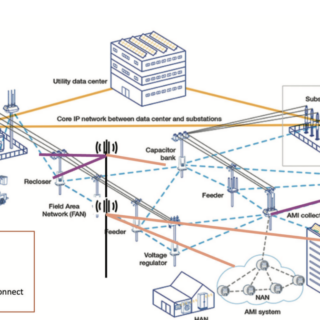-
6G - The Road to 6G: Queen’s University Belfast – July 2021
-
-
The Road to 6G: Queen’s University Belfast – July 2021
The Road to 6G: Ten Physical Layer Challenges for Communications Engineers.
While the deployment of 5G cellular systems will continue well into the next decade, much interest is already being generated towards technologies that will underlie its successor, 6G. 5G will surely have a transformative impact on the way people and businesses communicate, but it is still far from supporting the Internet-of-Everything (IoE), where upwards of a million devices per km3 (both terrestrial and aerial) will require ubiquitous, reliable, low-latency connectivity.
The idea of 6G has started to circulate within the wireless research community, with the first overview articles appearing in the literature in the past two years. The common ground of these narrative articles is that 6G will try to address the shortcomings of 5G by boldly pushing the communication to higher frequency bands (mmWave and THz), creating smart radio environments through reconfigurable surfaces, and by removing the conventional cell structures – aka cell-free massive MIMO (CF MaMi).
Unfortunately, transforming these speculative academic concepts into commercially viable solutions is a very challenging process.
Our researchers Prof. Simon Cotton, Prof. Vincent Fusco, Prof. Michalis Matthaiou, Dr. Hien-Quoc Ngo, Dr. David Morales-Jimenez and Dr. Okan Yurduseven examined the fundamental innovations needed as key physical layer enablers for 6G, such as intelligent reflecting surfaces, cell-free massive MIMO, and mmWave/THz/Free Space Optics frequency bands.
They identified 10 of the most important challenges that need to be addressed at the physical layer, to boost follow-up research in the 6G ecosystem.
Their discussion goes from fundamental electromagnetic and signal processing to transceiver design and hardware implementations, including theoretical modelling challenges, hardware implementation issues and scalability, while delineating the critical role of signal processing in the next generation of wireless communication technologies and networks.
Over the next decade, the investigation of these 10 most pressing challenges will cross-leverage expertise in signal processing, information theory, electromagnetics and physical implementation and require close cooperation between academia and industry.
Read the full analysis at: https://go.qub.ac.uk/RoadTo6G
The Road to 6G: Queen’s University Belfast – July 2021
WeChat: GSA Express


© GSA 2o21
-
Related Reports
-
Defining the XR Experience: Enabling the Immersivity Ecosystem.
Defining the XR Experience: Enabling the Immersivity Ecosystem. InterDigital white paper in Association with ABI Research. Download from the InterDigital…
Read more
-
-
Market Opportunity for Cat-M1 – Anterix & Ericsson paper
Market Opportunity for Cat-M1 The Emerging Market Opportunity for Cat-M1 in a 3 MHz Channel for Utility Broadband Networks As utilities and smart…
Read more
-
-
6G-Going Beyond 100 Gbps to 1 Tbps – Keysight white paper
6G-Going Beyond 100 Gbps to 1 Tbps Exceeding 100 Gbps Data Throughput with a Sub-THz Testbed for 6G Research 6G…
Read more
-

